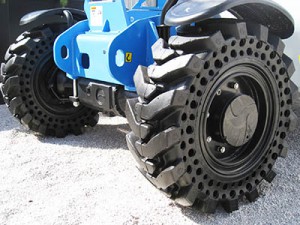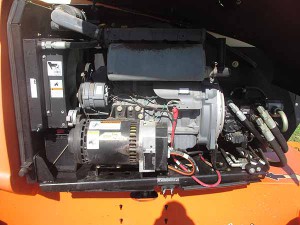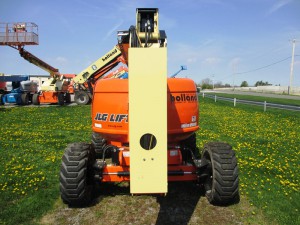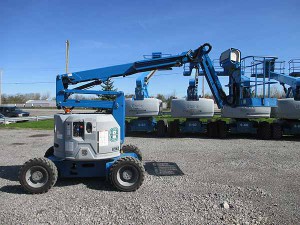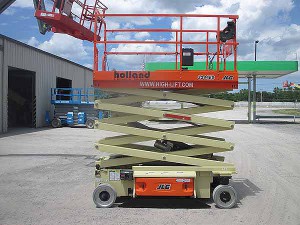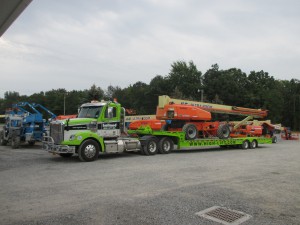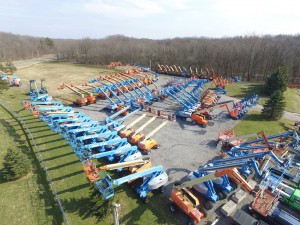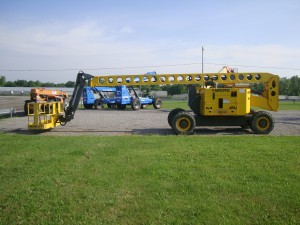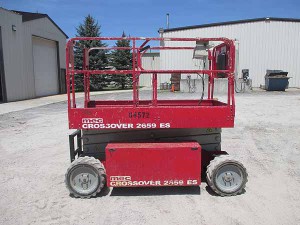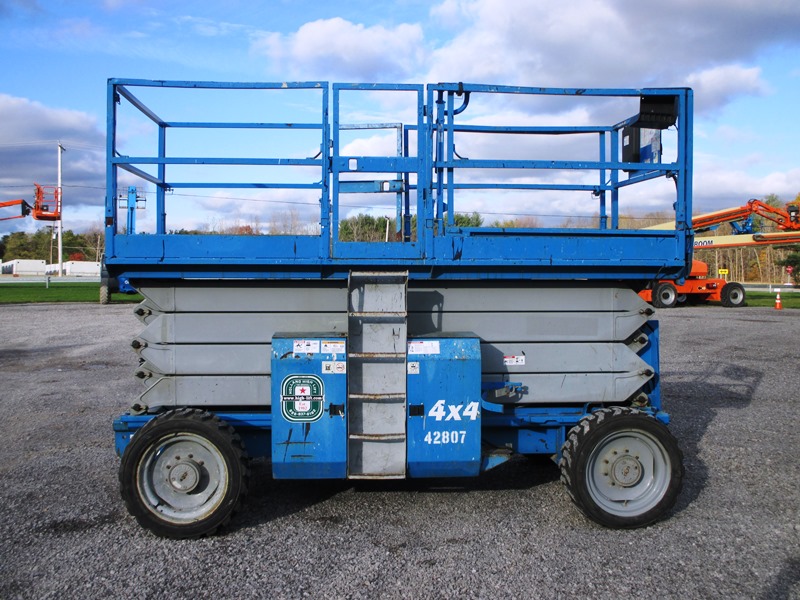
When customers come to us looking for a rough terrain scissor they’re often undecided on the size.
One way to go is getting the shortest lift they think they can get away with. If they need to reach 25 ft then that’s as big of a lift as they want. Usually this comes down to pricing. Shorter scissor lifts usually cost less and that holds true for both renting and purchasing them.
Some of our customers, particularly when they’re looking to purchase, think they might want to go larger. The thinking is that they only need to reach 25 ft now but what if we do an expansion that’s taller, or if they’re a contractor the next project could be bigger than they’ve ever done? If the customer gets a bigger scissor they feel they’re set for the future. Of course a taller lift will reach taller jobs but there are positives and negatives of larger scissors. The taller lifts also tend to have a bigger deck. In general this is a plus. Taller lifts also usually have a higher weight capacity and there’s no drawback to that. There are however 3 downsides to a bigger scissor. #1 is weight. Taller scissors weigh more. 26 ft scissors can weight less than 7,000 lbs while 5o ft scissors can approach 20,000 lbs. Weight can be a liability on rough job sites. #2 is related to weight and that’s transportation. Some 26 and 32 ft scissors can be move relatively easily with a heavy duty pickup and trailer but when you get over 40 ft that becomes difficult. Finally the 3rd downside is the height of the platform when it’s down. Taller scissor lifts need more scissor arms and when the lift is down the arms sit on top of each other. When you get to 40 or 50 ft scissor that means the deck is high which means a big climb getting up on the machine and makes loading your supplies and tools on it that much harder. If you’re working at 20 ft you’d rather not have to climb 10 of those feed yourself up the ladder to the platform.
In the end the best advice is when renting to go with the smallest size that you can complete your work with. If you’re purchasing it gets trickier. Do you buy the lift that can reach anything because it’s huge, the lift that completes your current project, or maybe something in the middle that takes care of most work and you rent a real big scissor for that oddball project that pops up needing a real big machine? There’s actually no right or wrong answer but it’s something to think long and hard about before purchase.
